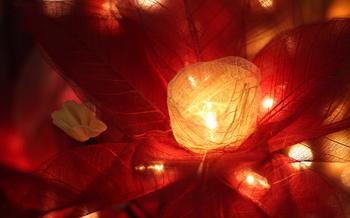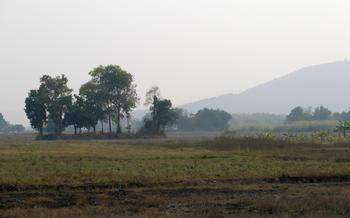
Ban Mae Pan Noi Ceramic Village
- The Ban Mae Pan Noi Ceramic Village: A Unique Destination
- Exploring the Village: A Visual Masterpiece
- The Art of Ceramic Making: A Timeless Tradition
- Shopping for Ceramics: A Memorable Experience
- Visiting the Ceramic Museum: A Journey Through Time
- Learning from the Masters: Workshops and Classes
- Trying Local Cuisine: A Taste of Phrae
- Exploring Nature's Beauty: Surrounding Attractions
- Photography Enthusiasts' Paradise: Capturing Beauty
- The Annual Ceramic Festival: A Celebration of Craftsmanship
- Respecting Local Customs and Traditions
- Planning Your Visit: A Smooth Journey
- Budget-Friendly Tips: Making the Most of Your Trip
- Solo Travelers' Haven: A Welcoming Community
- Insider Tip: Hidden Gems to Discover
The Ban Mae Pan Noi Ceramic Village: A Unique Destination
Nestled in the heart of Thailand's Phrae province, the Ban Mae Pan Noi Ceramic Village stands as a testament to the enduring spirit of traditional craftsmanship. With a history dating back over a century, this charming village has earned a reputation as a hub of ceramic artistry, attracting visitors from around the world who seek to immerse themselves in the beauty and authenticity of Thai ceramics.
The village's origins can be traced back to a group of skilled potters who settled in the area, drawn by the abundance of high-quality clay and the patronage of local rulers. Over the years, the village's reputation grew, and its ceramics became renowned for their intricate designs, vibrant colors, and exceptional durability.
Today, Ban Mae Pan Noi remains a thriving center of ceramic production, with over 60 households engaged in the craft. The village is easily accessible, located just a short drive from the provincial capital of Phrae. Visitors to the village are immediately struck by its unique atmosphere, with colorful ceramic pots and figurines adorning every corner, creating a vibrant tapestry of colors and textures.
Exploring the Village: A Visual Masterpiece
As you stroll through the narrow lanes of Ban Mae Pan Noi, you'll be captivated by the vibrant streets and colorful houses that line the village. Each house is adorned with intricate ceramic tiles, creating a visual masterpiece that reflects the village's unique identity. The houses serve as both residences and ceramic workshops, where artisans skillfully craft their creations.
The ceramic designs and styles in Ban Mae Pan Noi are truly remarkable. From traditional Thai patterns to contemporary motifs, the variety is endless. You'll find everything from intricate floral designs to playful animal figurines, each piece showcasing the creativity and skill of the local artisans.
The charm and hospitality of the villagers are an integral part of the Ban Mae Pan Noi experience. They warmly welcome visitors into their homes and workshops, eager to share their knowledge and passion for ceramics. You'll have the opportunity to witness firsthand the intricate process of ceramic making and learn about the unique techniques used by the artisans.
The Art of Ceramic Making: A Timeless Tradition
The ceramic making process in Ban Mae Pan Noi is a mesmerizing blend of artistry, skill, and patience. The villagers have mastered the art of transforming ordinary clay into exquisite ceramic pieces, using techniques passed down through generations.
The process begins with the selection of high-quality clay, which is then meticulously cleaned and prepared. The clay is then shaped into various forms using a variety of techniques, including molding, throwing on a potter's wheel, and hand-building.
Once the desired shape is achieved, the ceramic pieces are left to dry slowly. This process can take several days, depending on the size and thickness of the piece. Once the clay is completely dry, it is fired in a kiln at extremely high temperatures.
The firing process is crucial, as it determines the final strength, durability, and color of the ceramic pieces. The villagers use traditional kilns fueled by wood or gas, which allows them to achieve the desired results.
After firing, the ceramic pieces are often glazed to add color and shine. The glazes are made from natural materials, such as minerals and ashes, and are applied by dipping, pouring, or brushing.
The final step is to fire the ceramic pieces again at a lower temperature to set the glaze. This process results in the beautiful, vibrant colors and patterns that characterize Ban Mae Pan Noi ceramics.
The art of ceramic making in Ban Mae Pan Noi is not just a craft; it is a way of life. The villagers' deep connection to their work and their pride in their craft are evident in every ceramic piece they create.
Shopping for Ceramics: A Memorable Experience
Strolling through the narrow lanes of Ban Mae Pan Noi, you'll be greeted by a myriad of ceramic shops and studios, each showcasing a unique array of handcrafted pieces. From intricate tableware and decorative ornaments to quirky figurines and garden pots, the village offers a treasure trove of ceramic wonders.
As you browse through the colorful displays, you'll notice the exceptional quality and artistry of the ceramics. Each piece is lovingly crafted by skilled artisans, using traditional techniques passed down through generations. The intricate patterns, vibrant glazes, and unique designs reflect the village's rich ceramic heritage.
Shopping for ceramics in Ban Mae Pan Noi is not just about acquiring beautiful souvenirs; it's about supporting the local artisans and their livelihood. By purchasing their creations, you directly contribute to the preservation of this ancient craft and ensure the continuation of the village's ceramic tradition.
To make your shopping experience even more rewarding, don't hesitate to engage with the artisans. They are always eager to share their stories, explain the techniques they use, and provide insights into the significance of their work. You may even get a glimpse into their workshops and observe the magical process of ceramic making firsthand.
When it comes to prices, bargaining is a common practice in Thailand. However, remember to be respectful and fair in your negotiations. The artisans put a lot of time, effort, and skill into their work, so it's important to value their creations accordingly.
Whether you're a seasoned collector or simply looking for a unique souvenir, Ban Mae Pan Noi is a shopper's paradise. With its abundance of ceramic treasures and the opportunity to support local artisans, your shopping experience will be both memorable and meaningful. So, get ready to indulge your senses and bring home a piece of this village's rich ceramic heritage.
Visiting the Ceramic Museum: A Journey Through Time
The Ban Mae Pan Noi Ceramic Museum is a treasure trove of knowledge and artistry, offering visitors a glimpse into the rich history and evolution of ceramic making in the village. Housed in a traditional wooden building, the museum showcases a diverse collection of antique and contemporary ceramics, each piece telling a story of skill, creativity, and cultural significance.
Visitors can trace the journey of ceramic making in the village, from its humble beginnings to its current status as a renowned center of ceramic art. The museum's displays include ancient pottery shards, intricate celadon wares, and modern experimental pieces, highlighting the diverse range of techniques and styles that have shaped the village's ceramic tradition.
Interactive exhibits and workshops allow visitors to engage with the ceramic-making process firsthand. They can try their hand at throwing a pot on a potter's wheel, learn about the different types of clay and glazes used, and even create their own ceramic pieces to take home as a souvenir.
Through its collection and interactive displays, the Ban Mae Pan Noi Ceramic Museum offers visitors a deeper understanding of the village's rich ceramic heritage and the artistry that continues to thrive within its community.
Learning from the Masters: Workshops and Classes
The Ban Mae Pan Noi Ceramic Village is not just a place to admire and shop for ceramics; it also offers a unique opportunity to learn the art of ceramic making from the masters themselves. Several workshops and classes are available for both beginners and experienced potters, providing a hands-on experience that allows visitors to create their own ceramic pieces.
The workshops typically start with a brief introduction to the history and techniques of ceramic making in the village, followed by a demonstration by a skilled artisan. Participants are then provided with all the necessary materials and guidance to create their own ceramic pieces, from selecting the clay and shaping it on the potter's wheel to glazing and firing it in the kiln.
The process of creating a ceramic masterpiece can be challenging but immensely rewarding. The workshops provide a unique opportunity to learn from the masters and gain valuable insights into the art and tradition of ceramic making. Participants can experiment with different techniques, try out new designs, and discover their own creative potential.
Whether you are a complete beginner or an experienced potter, the workshops and classes at the Ban Mae Pan Noi Ceramic Village offer a memorable and enriching experience. They provide a chance to connect with the local artisans, learn about their craft, and create your own ceramic pieces that will serve as a lasting reminder of your visit to this unique and vibrant village.
Trying Local Cuisine: A Taste of Phrae
A visit to Ban Mae Pan Noi Ceramic Village is not complete without savoring the flavors of Phrae's local cuisine. The village is renowned for its tantalizing khao soi, a northern Thai dish that tantalizes taste buds with its rich broth, tender noodles, and crispy toppings. The fragrant blend of spices, including curry paste, coconut milk, and lemongrass, creates a harmonious balance of flavors that lingers on the palate.
Beyond khao soi, the village offers a culinary journey that showcases the culinary heritage of Phrae. Visitors can indulge in mouthwatering local delicacies such as sai oua, a flavorful northern Thai sausage made with minced pork, lemongrass, and kaffir lime leaves; and gaeng hang lay, a rich curry dish featuring pork belly, tomatoes, and pineapple. These dishes, bursting with local ingredients and traditional cooking techniques, provide a glimpse into the region's rich culinary traditions.
Supporting local food vendors is not only a delightful way to experience Phrae's cuisine but also a meaningful contribution to the community. By choosing to dine at local restaurants and street stalls, visitors directly support the livelihoods of hardworking families and contribute to the preservation of culinary traditions that have been passed down through generations.
Exploring Nature's Beauty: Surrounding Attractions
Beyond the ceramic wonders of Ban Mae Pan Noi, nature lovers will find a wealth of attractions in the surrounding area. The village is nestled amidst the picturesque Mae Yom National Park, renowned for its stunning landscapes, lush forests, and cascading waterfalls. Visitors can embark on scenic nature trails, encounter diverse wildlife, and immerse themselves in the tranquility of the natural surroundings.
A short drive from the village leads to the enchanting Mae Yom Waterfall, where visitors can marvel at the cascading waters and take a refreshing dip in the cool pools below. The park also offers opportunities for camping, bird watching, and wildlife photography.
For those seeking a more adventurous experience, exploring the hidden gems off the beaten path is highly recommended. Venturing into the surrounding countryside, travelers can discover lesser-known waterfalls, secluded viewpoints, and serene temples. These hidden gems offer a unique glimpse into the region's rich natural and cultural heritage.
Photography Enthusiasts' Paradise: Capturing Beauty
The Ban Mae Pan Noi Ceramic Village is a photographer's dream, with its vibrant streets, colorful houses, and intricate ceramic designs. The village exudes a sense of timeless charm and authenticity that makes it a perfect subject for capturing stunning photographs.
Tips for Capturing Stunning Shots:
- Embrace the Colors: Let the vibrant colors of the village be the focal point of your photographs. Experiment with different angles and perspectives to capture the essence of the village's unique character.
- Play with Light and Shadow: The interplay of light and shadow creates dramatic effects in the village. Take advantage of the early morning or late afternoon light to capture the magic of the village's architecture and surroundings.
- Capture the People: The villagers are an integral part of the village's charm. Engage with them, capture their smiles, and portray their stories through your photographs.
- Experiment with Different Lenses: Bring a variety of lenses to capture different perspectives. Wide-angle lenses are great for capturing the village's overall atmosphere, while telephoto lenses allow you to focus on specific details and intricate designs.
Sharing Your Experiences Through Photography:
Once you've captured the beauty of Ban Mae Pan Noi through your lens, share your experiences with the world. Post your photographs on social media, using relevant hashtags, and inspire others to visit this hidden gem. Your photographs can help promote the village's rich cultural heritage and attract more visitors to this unique destination.
The Annual Ceramic Festival: A Celebration of Craftsmanship
The Ban Mae Pan Noi Ceramic Village comes alive every year with the vibrant Annual Ceramic Festival. This grand event is a celebration of the village's rich ceramic-making tradition and attracts visitors from all over Thailand and beyond. The festival is a visual spectacle, showcasing the finest ceramic creations from the village's talented artisans.
During the festival, the streets are adorned with colorful decorations, and the atmosphere is filled with excitement and festivity. There are demonstrations of ceramic making, workshops where visitors can try their hand at pottery, exhibitions displaying the latest ceramic designs, and live music performances.
The highlight of the festival is the Ceramic Competition, where artisans compete to create the most innovative and beautiful ceramic pieces. The competition is judged by a panel of experts, and the winners are awarded prizes and recognition. The festival is not just a showcase of ceramic art; it is also a celebration of the community spirit and the cultural heritage of the Ban Mae Pan Noi Ceramic Village. Visitors can interact with the artisans, learn about their unique skills, and purchase one-of-a-kind ceramic pieces directly from the makers.
The Annual Ceramic Festival is a must-attend event for anyone interested in ceramics, art, and Thai culture. It is an opportunity to witness the creativity and craftsmanship of the Ban Mae Pan Noi artisans and to take home a piece of their remarkable work.
Respecting Local Customs and Traditions
When visiting the Ban Mae Pan Noi Ceramic Village, it is important to be mindful of local customs and traditions to ensure a respectful and enjoyable experience. Dressing appropriately is essential, with modest clothing that covers the shoulders and knees. Avoid wearing revealing or overly casual attire. When interacting with the villagers and artisans, greet them with a polite "wai" (a traditional Thai gesture with hands pressed together in front of the chest). Be respectful of their time and space, and avoid interrupting them while they are working.
Supporting sustainable tourism practices is crucial for preserving the village's unique character. Choose tour operators that prioritize responsible tourism and give back to the community. Respect the environment by avoiding littering and using resources responsibly. Remember that tourism should benefit the village and its people while preserving its cultural heritage.
Planning Your Visit: A Smooth Journey
Best Time to Visit: The ideal time to visit Ban Mae Pan Noi Ceramic Village is during the dry season, from November to April. The weather is pleasant and sunny, making it perfect for exploring the village and its surroundings.
Accommodation Options: There are several accommodation options available near the village, ranging from budget-friendly guesthouses to comfortable resorts. Visitors can choose to stay in the village itself or in the nearby town of Phrae.
Transportation Options: The village is easily accessible by public transportation. Visitors can take a bus or a minivan from Phrae to Ban Mae Pan Noi. The journey takes approximately 30 minutes. Alternatively, visitors can rent a car or a motorbike for a more flexible and independent travel experience.
Budget-Friendly Tips: Making the Most of Your Trip
Visiting the Ban Mae Pan Noi Ceramic Village doesn't have to be expensive. There are several ways to make your trip budget-friendly without compromising on experiences.
Accommodation options in the village are affordable, with guesthouses and homestays available at reasonable rates. Dining options also cater to various budgets, from local street food stalls to small restaurants serving delicious Thai cuisine. For those looking to save even more, cooking meals at your guesthouse or homestay is a great option.
The village offers free activities and attractions that allow you to immerse yourself in the ceramic culture. Walking around the village and admiring the colorful houses and ceramic displays is a feast for the eyes. You can also visit the ceramic museum, which showcases antique and contemporary ceramics without any entrance fee.
Local markets are a haven for budget-conscious travelers. Here, you can find a variety of souvenirs and handicrafts at affordable prices. Bargaining is expected, so don't be afraid to negotiate for a good deal.
With a little planning and resourcefulness, you can easily experience the wonders of the Ban Mae Pan Noi Ceramic Village without breaking the bank. Embrace the local culture, savor delicious food, and take home unique ceramic pieces without spending a fortune.
Solo Travelers' Haven: A Welcoming Community
Ban Mae Pan Noi Ceramic Village welcomes solo travelers with open arms. The villagers are renowned for their warmth and hospitality, ensuring that every visitor feels at ease. Navigating the village as a solo traveler is a breeze, as the locals are always willing to lend a helping hand or provide directions. Joining group tours or workshops is an excellent way to meet fellow travelers and share experiences. Whether you prefer to wander the vibrant streets, immerse yourself in ceramic-making classes, or savor the local cuisine, Ban Mae Pan Noi offers a fulfilling and enriching experience for solo travelers seeking authenticity and connection.
Insider Tip: Hidden Gems to Discover
Beyond the main attractions, the Ban Mae Pan Noi Ceramic Village offers hidden gems waiting to be discovered. Take the time to explore the nearby villages, where you'll find hidden ceramic workshops showcasing unique styles and techniques. Engage with the local artisans, learn about their creative processes, and uncover the stories behind their beautiful creations.
Moreover, immerse yourself in the village's rich cultural heritage by visiting the local temples and markets. These places provide a glimpse into the daily lives of the villagers and offer an authentic cultural experience. Don't hesitate to interact with the locals, greet them with a warm "Sawasdee" (hello), and ask about their way of life. Learning a few basic Thai phrases, such as "khawp khun" (thank you) and "mai pen rai" (it doesn't matter), will help you connect with the locals and enhance your overall experience.
Embrace the opportunity to explore beyond the beaten path and discover the hidden treasures that make the Ban Mae Pan Noi Ceramic Village truly special. These hidden gems will not only enrich your visit but also leave you with lasting memories of your time in this charming and vibrant community.





